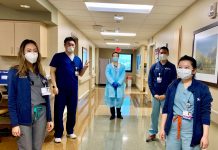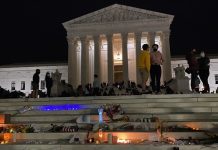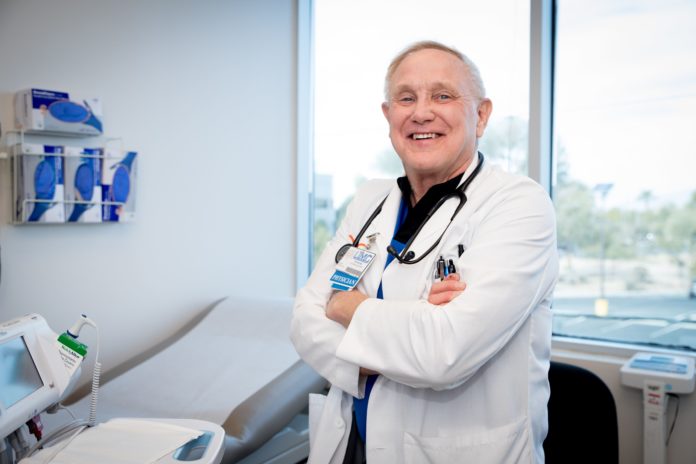Las Vegas physician Jerry Cade is a well-known pioneer of AIDS medicine. He also is a longtime advocate for LGBTQ+ health care in the valley. The Las Vegas Spectrum asked him about how the COVID-19 crisis is affecting our community and how we can stay safe.
Q: We know the pandemic shut down the entire Las Vegas Valley. It is just now reopening. How do you feel that COVID-19 is affecting the LGBTQ+ community in particular?
A: Like most situations in life, groups that have traditionally been marginalized and/or disenfranchised seem to be further isolated by cataclysmic events like this pandemic.
Perhaps, the most glaring disparities with COVID-19 have been the increased incidence of morbidity (illness) and mortality (death) in the African American and Latino communities, which would, of course, exacerbate challenges for LGBTQ+ individuals, who are African American or Latino.
Blacks have had almost twice as many deaths as their percentage of the population. Likewise, Latinos have been hard hit with an out-of-proportion number of COVID-19 diagnoses and deaths.
However, beyond the specific impact this has on LGBTQ+ communities of color is the underlying probability that one of the main reasons for these disparities is a lack of access to culturally appropriate health care.
Unfortunately, the LGBTQ+ community shares in this lack of access to culturally appropriate health care. In general, access to appropriate health care for women has been more of a challenge than it has for men, so that would mean lesbians and bisexual women are at risks for these barriers. And of course, trans health care is all but non existent, so this is another group that is at risk for problems.
Ironically, treated HIV disease does NOT confer any increased risk of acquiring COVID-19. There are even theories – just speculation with no proof – that because of the persistent viral replication in HIV positive individuals, they might be at less risk of acquiring or succumbing to infection with SARS-CoV-2.
I think that is an interesting, but very challenging to prove theory, but it does underscore how far we have come with HIV treatment over the past 39 years. The U.S. HIV epidemic officially began June 5, 1981 with the Center for Disease Control and Prevention’s Morbidity and Mortality Report about a cluster of five gay men in Los Angeles with pneumocystis jiroveci (carinii) pneumonia.
Q: As an AIDS medicine pioneer, what do you think the long-lasting medical effects of the global COVID-19 pandemic will be?
A: Speculating has never been my strong point. That is why I don’t gamble. There are several examples from nature of the long-term effects of viral infections.
With a virus like hepatitis A or B, a person gets the disease, has an immune response and has a lifetime of immunity, particularly with hepatitis A. For some reason with hepatitis B, 10 percent of the infected population develops chronic hepatitis B. Then with hepatitis C, only 15 percent to 30 percent of the population have an immune response that eliminates the virus, whereas 70 percent to 85 percent of the infected individuals develop chronic hepatitis B.
Then, there are viruses like herpes- both herpes simplex (cold sores and genital herpes) and herpes zoster (shingles), which never go away and can manifest themselves at any time – usually the most inopportune times.
Then, there are viruses like the flu, which is continually changing. We can develop a vaccine for a particular strain of the flu in time to blunt the flu’s impact for a given season, but we have to do it all over again the next year.
Unfortunately, SARS-CoV-2 seems to be acting more like the flu virus, so it may be that we have to get our flu and COVID vaccines every year.
Apart from the treatment concerns for COVID-19, the pandemic has exposed gaping holes in our public health care



























